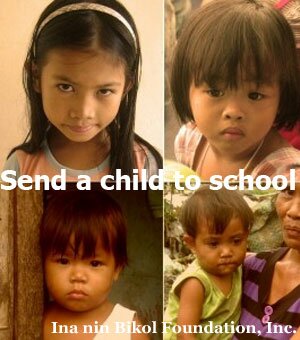Failing Languages
Familial and personal concerns have brought me back to Naga two years ago for extended weekends. I started to get to know the city once more. That street called Magsaysay surprised me with its bars and cafes and as well as young men and women who appeared to know their lattes well.
The longer I stayed out and the more I got engaged with the city, the more I realized that a new language seemed to have supplanted the Bikolano language. In drug stores and Internet cafes, in clinics and hospitals, in the four quasi-malls of the city, the operative language was Tagalog. This is the same language that Manila-based and, certainly native Tagalog-speaking and/or Tagalog-loving individuals call Pilipino. It is a preference that has the backing of laws and, apparently, the Constitution. By law and by cultural imposition, it is a dominant and dominating language.
Initially, I saw in the preponderance of the Tagalog as indicating the phenomenon of what linguists call the “contact vernacular.” The presence of contact vernacular implies that when people do not know each other – and they are not sure of their respective languages – they would tend to use a language that they could be assured would be understood by the parties involved.
Judgmental at first, my anthropological antenna went up and overcame my initial enervation at this phenomenon. I decided on a course of action: conduct a research using the phenomenological approach, where the classic participation is supplemented by conversation. I did not want my respondents to feel wary with my questions. I also wanted to go beyond anecdotal.
The initial results were overwhelming. Two major reasons were cited by my informants: for communication and better understanding, and nationalism. There was a third justification, and this came from mothers who said it is good to start them young with the correct inflection. No wonder, each time I go around Naga – in malls and other public places, I see and hear mothers talking to their children in Tagalog and their children responding back to them in the same language. As they grow, the children will sound like native Tagalog speakers, and in Manila, no one will laugh at them, mothers have told me. In a sense, parents are telling us about how the home is really the reproduction of what the nation is going through.
The responses I gathered were not responses but discourses about society. Language is never neutral; the use of Tagalog as saying something about something confirms this.
The phenomenon tells us that the Bikolano sees his language as largely inadequate. When before a dialect or the first language is the seat of communication, my respondents see it as barrier to communication, oddly enough in a place where that language is supposedly functional.
The use of Tagalog alerts us to that great bully called national culture, or the swagger of a formidable center like Manila. Imposed and impressed on the Bikolano is the gaze of Manila, that sole determinant of the correct and proper.


